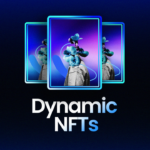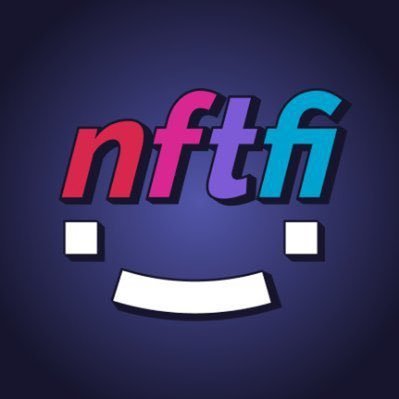
What is NFTfi (NFT Finance)
NFTfi, short for NFT Finance, is a term that describes the integration of decentralized finance (DeFi) with non-fungible tokens (NFTs).
It includes financial services such as lending, borrowing, staking, fractionalization, derivatives, and liquidity solutions that leverage NFTs as collateral or tradable financial instruments.
As NFTs become more valuable and widely adopted, NFTfi is emerging as a crucial sector that enables NFT holders to unlock liquidity, generate passive income, and engage in complex financial transactions without selling their assets outright.
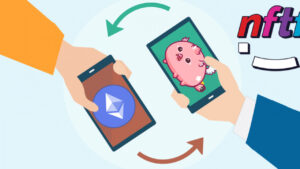
Key Concepts in NFTfi
NFTfi encompasses several financial mechanisms that enhance the utility and value of NFTs beyond simple digital ownership. Below are some of the core features of NFTfi:
1. NFT Lending & Borrowing
NFT holders can use their assets as collateral to secure loans in cryptocurrency or stablecoins. This allows NFT owners to access liquidity without selling their digital assets. Borrowers typically pledge their NFTs as security, and if they fail to repay, lenders may claim ownership of the NFT.
2. Fractionalized NFTs
Some NFTs, especially high-value assets, can be split into smaller, fungible ERC-20 tokens that represent fractional ownership. This makes it possible for multiple investors to own a portion of a high-value NFT, increasing accessibility and liquidity.
3. NFT Staking
Certain platforms allow NFT holders to stake their assets in liquidity pools in exchange for rewards, often in the form of native project tokens. This incentivizes holding NFTs for long-term growth and passive income generation.
4. NFT Derivatives
NFT derivatives are financial products that derive their value from underlying NFT assets. These can include futures contracts, options, or structured investment products, allowing traders to hedge risk or speculate on NFT price movements.
5. NFT Liquidity Pools
Some platforms provide liquidity pools where users can deposit NFTs in exchange for fungible tokens or direct liquidity. This improves the tradability and accessibility of NFTs in the market.
6. Rentable NFTs
NFT holders can rent out their digital assets to users without transferring ownership. This is especially useful for in-game assets, virtual land, and digital collectibles where users need temporary access to NFTs without the need for outright purchase.
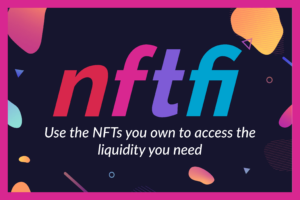
How NFTfi Works
The NFTfi ecosystem functions through smart contracts that automate and secure transactions between borrowers, lenders, and investors.
A typical NFTfi transaction follows these steps:
- Depositing NFTs on a Lending Platform – The NFT owner lists their asset on an NFT lending platform, specifying loan terms such as duration, interest rate, and collateral ratio.
- Borrowers Request Loans – A borrower requests a loan against the NFT, and a smart contract locks the asset until the loan is repaid.
- Lenders Provide Funds – Lenders offer liquidity in stablecoins or cryptocurrencies in exchange for interest payments.
- Loan Repayment or Liquidation – The borrower repays the loan, and the NFT is unlocked. If the borrower defaults, the lender gains ownership of the NFT.
Popular NFTfi Platforms
Numerous platforms have emerged as key players in the NFTfi ecosystem, providing unique lending, staking, and liquidity solutions:
- NFTfi.com – A peer-to-peer NFT-backed lending marketplace.
- BendDAO – A decentralized lending protocol allowing instant NFT-backed loans.
- Arcade.xyz – A permissionless NFT lending and borrowing platform.
- ParaSpace – A cross-margin NFT lending protocol for DeFi integration.
- JPEG’d – A DeFi protocol enabling loans against high-value NFTs.
Benefits of NFTfi
NFTfi presents several advantages that enhance the overall functionality and financial potential of NFTs:
✔ Increased Liquidity – Converts illiquid NFT holdings into liquid assets without requiring a sale.
✔ Financialization of NFTs – Expands the use cases of NFTs beyond art and collectibles into structured financial instruments.
✔ Passive Income Opportunities – Enables NFT holders to generate returns via lending, staking, or renting.
✔ Improved Accessibility – Fractionalization allows investors with smaller capital to participate in high-value NFT investments.
Risks & Challenges in NFTfi
Despite its benefits, NFTfi also comes with risks that users must consider before engaging in NFT-backed financial transactions:
⚠ Price Volatility – NFT valuations can fluctuate significantly, impacting collateralized loan values.
⚠ Liquidation Risk – If the value of a pledged NFT drops below a certain threshold, it may be liquidated by the lender.
⚠ Smart Contract Vulnerabilities – Bugs or exploits in DeFi smart contracts can result in asset losses. ⚠ Counterparty Risk – In peer-to-peer NFT lending, default risk is a concern where a borrower fails to repay the loan.
Use Cases of NFTfi
NFTfi is shaping new opportunities for digital asset owners across various industries:
- Artists & Collectors – Use NFT-backed loans to unlock liquidity without selling valuable assets.
- Gamers & Metaverse Users – Rent or stake in-game assets to generate passive income.
- DeFi Traders – Trade NFT derivatives or use NFT-backed financial instruments for yield farming.
- DAOs & Investment Funds – Pool funds to invest in fractionalized high-value NFTs.
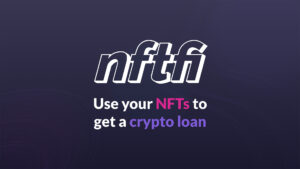
The Future of NFTfi
The NFTfi ecosystem is rapidly evolving as blockchain technology matures. Future developments in NFTfi may include:
- More Advanced NFT Lending Protocols – With improved risk management and dynamic collateralization models.
- Integration with Traditional Finance – Institutions may begin leveraging NFT-backed securities.
- Enhanced Cross-Chain Solutions – NFTfi platforms will likely expand to support multiple blockchains and interoperable assets.
- Regulatory Clarity – Governments and financial regulators will increasingly address NFT financialization.
NFTfi is revolutionizing how digital assets are valued and utilized, moving beyond collectibles into real-world financial applications.
As new innovations emerge, NFT finance is expected to redefine the role of NFTs in the global economy, making them an integral part of DeFi and blockchain-based financial ecosystems.
Related Terms:
FAQ
1. What is NFTfi and how does it work?
NFTfi is the integration of decentralized finance (DeFi) and NFTs, allowing NFT holders to access financial services such as lending, staking, and liquidity solutions. Users can use their NFTs as collateral to obtain loans or earn passive income through staking and rentals.
2. What are the risks of using NFTfi platforms?
The main risks include NFT price volatility, liquidation of collateral, smart contract vulnerabilities, and counterparty risk in peer-to-peer lending agreements.
3. How can I start using NFTfi services?
To get started, choose a reputable NFTfi platform like NFTfi.com or BendDAO, connect your digital wallet, and explore options such as lending, borrowing, staking, or fractional ownership.


